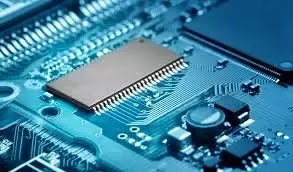CAD for microelectromechanical systems (MEMS)
#news: CAD for microelectromechanical systems (MEMS)
more information:
Computer-Aided Design (CAD) plays a crucial role in the design and development of microelectromechanical systems (MEMS). MEMS are miniaturized devices that integrate mechanical elements, sensors, actuators, and electronics on a single chip. CAD software tools specifically designed for MEMS enable engineers to model, simulate, and optimize these complex systems efficiently.
Here are some key aspects of CAD for MEMS:
2D/3D Modeling: CAD software provides a platform to create accurate geometric models of MEMS devices. Engineers can design various components, such as microstructures, electrodes, and interconnects, using intuitive 2D and 3D modeling interfaces.
Parametric Design: CAD tools allow engineers to define and modify design parameters of MEMS devices easily. By employing parametric modeling techniques, designers can explore different design alternatives and optimize device performance.
Simulation and Analysis: MEMS CAD software provides simulation capabilities to predict the behavior of devices under different operating conditions. Engineers can simulate the mechanical, electrical, thermal, and fluidic aspects of MEMS to evaluate their performance, reliability, and manufacturability.
Structural Analysis: Finite Element Analysis (FEA) helps assess the structural integrity, stress distribution, and deformation of MEMS components.
Electrostatic Analysis: CAD tools simulate the electrostatic forces and capacitance effects in MEMS devices, which are crucial for devices like accelerometers and gyroscopes.
Thermal Analysis: CAD software enables engineers to analyze heat dissipation, thermal stress, and temperature distribution in MEMS devices.
Fluidic Analysis: For MEMS devices involving fluid flow, Computational Fluid Dynamics (CFD) simulations assist in analyzing fluid behavior and optimizing designs.
Design Optimization: CAD software incorporates optimization algorithms that enable engineers to improve MEMS device performance, such as sensitivity, response time, and power consumption. Optimization techniques, such as genetic algorithms or gradient-based methods, can be applied to find optimal design parameters.
Process Integration: MEMS CAD tools often provide process design kits (PDKs) that include process-specific information, material properties, and design rules. This information allows designers to align their models with the capabilities and constraints of the MEMS fabrication processes, ensuring manufacturability.
Layout and Mask Generation: CAD software assists in generating layout files and masks required for MEMS fabrication. The software can convert the design models into the appropriate file formats compatible with fabrication equipment
visit : https://cad-conferences.sciencefather.com/




No comments:
Post a Comment